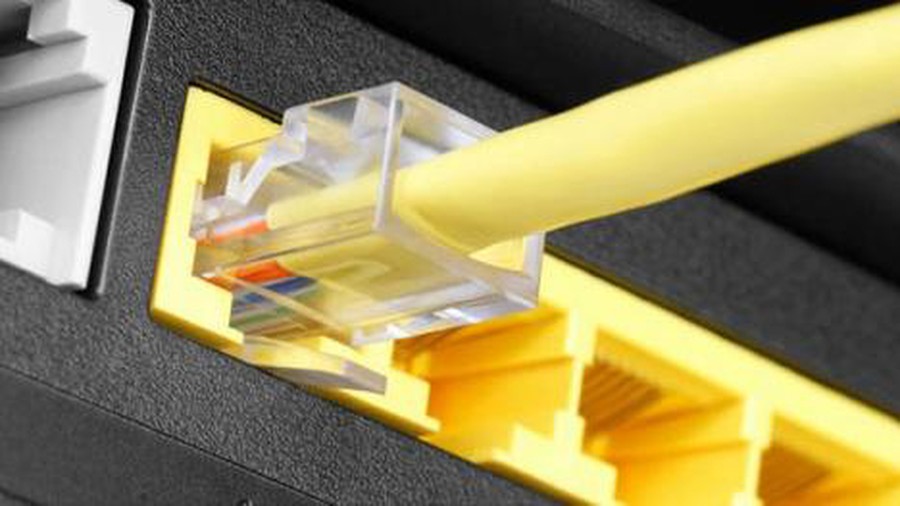5 tips to improve Linux security
 Network Administration - Protecting a networked computer is a challenge that never ends - even in Linux. These simple methods will help you protect your Linux computers .
Network Administration - Protecting a networked computer is a challenge that never ends - even in Linux. These simple methods will help you protect your Linux computers .
Can you what it? You don't need to do anything about security on a Linux computer just because it is Linux? If you have those thoughts, you need to think again. Linux is an operating system, so it also needs to be protected. Although this operating system can be quite secure, there is no operating system that is 100% safe for all operating times. Here are 5 simple Linux security tips that are very important to this operating system.
1. Take advantage of keyring
For many people, this can be an annoyance. You log on to the computer, the computer requires a connection to a network (or an LDAP server, .) and you must enter your keyring password. This feature can be disabled by giving it a white password and ignoring the warning that you are transmitting unencrypted information (including passwords). However, this is not a good way. Although it may be thought that doing this will increase complexity, the existence of this feature or function has its reasons - it helps to encrypt sensitive passwords when they are sent on line. physical.
2. Execute user password upgrade
If you run a multi-user environment, you need to make sure that your users change their passwords regularly. To do this, you can use the chage command. You can check the expiration time with the sudo chage -l USERNAME command (here USERNAME is the name of the user who wants to check). Suppose you can expire a user password and force him to change it the next time you log on. To do this, you can use the sudo chage -E EXPLICIT_EXPIRATION_DATE -m MINIMUM_AGE -M MAXIMUM_AGE -I INACTIVITY_PERIOD -W DAYS_BEFORE_EXPIRATION command (here all options in CAPS are user defined).
3. Do not blindly disable SELinux
Like keyring, SELinux has its own reasons. SE stands for Security Enhanced phrase and it provides an access control mechanism for applications. There are many solutions to solve the problems related to disabling SELinux. However, it actually only makes matters more complicated. If a program does not run properly, you can study changing the SELinux policy to suit your needs instead of disabling SELinux. If you don't want to do this via the command line, you can check the GUI tool called polgengui.
4. Do not log in with the root account
It is not necessary to be strong that Linux users should not log in with a root user account. If you need to perform certain administrative tasks on a computer, log in with regular accounts and su for root users or use sudo . When logging in as root, you can effectively bypass the mainstream security barrier, allowing access to the system and subsystems that are normally not accessible when logged in as a person. standard use. Do not do this. Log in with your previous account.
5. Install security updates immediately
There is a big difference between how Linux and Windows manage upgrade operations. Windows often makes a major but infrequent upgrade, while Linux performs small upgrades regularly. Ignoring these updates may have serious consequences if the security holes are not patched in time on your system. Remember, one of these upgrades is security patches and should be applied immediately. Never ignore the icon that indicates available updates. And if you are using a server without a GUI interface, set up a script to automatically check for updates or you have to perform a manual check daily or weekly . Constantly updated, then you will be safer.
You should read it
- Tips and tricks after installing Ubuntu
- Pop! _OS What is it? Is it like Ubuntu?
- Distinguish Ubuntu and Linux Mint
- Compare the most popular Linux distributions today
- 10 reasons to switch to Linux right in 2012
- Instructions for uninstalling software on Ubuntu
- 12 best Linux server operating systems
- 3 Linux mobile operating systems you can install today
- 5 best Ubuntu-based Linux distributions of all time
- How to create a Live Ubuntu Linux USB
- How to Uninstall Ubuntu Operating System
- How to Dual Boot Windows 10 and Ubuntu 16.04






 5 ways to improve Linux user account security
5 ways to improve Linux user account security 20+ essential Linux security commands
20+ essential Linux security commands How to improve gaming performance on Linux
How to improve gaming performance on Linux How to create file swap in Linux
How to create file swap in Linux Tricks to improve wifi network security
Tricks to improve wifi network security Microsoft officially submitted an application to join 'Linux secretion'.
Microsoft officially submitted an application to join 'Linux secretion'.